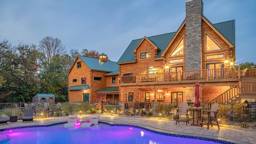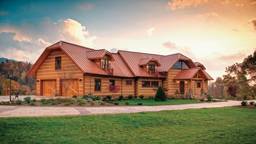
Machine-Milled Option
-
Cut to a uniform shape and size.
-
A beveled edge or tongue-and-groove can be used to interlock logs. Swedish coping is also an option.
-
They’re typically stripped of their bark for consistent grain and color.
-
Corner lengths are uniformly cut for a precise fit and tidy appearance.
-
Chinking is often unnecessary but can be used for aesthetics.
See also How to Choose the Right Log Home Builder

Handcrafted Option
-
Logs are irregularly shaped and vary in size and diameter.
-
Each log is cut to conform to the one beneath it.
-
You can typically see marks from the adze and drawknives the craftsmen use.
-
Corner lengths are usually not uniform.
-
Sealant or chinking adheres the logs to each other and seals gaps to make the home weather-tight.
Half-Log Option
There is yet another choice for log home construction: half logs. At its core, a half-log home is traditionally framed from dimensional lumber, sheathed and covered in half-log siding. The half logs also can be applied inside to give a full-log look, or drywall can be hung indoors if an abundance of interior wood isn’t your thing.











